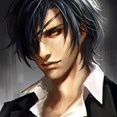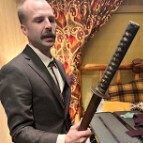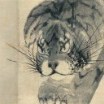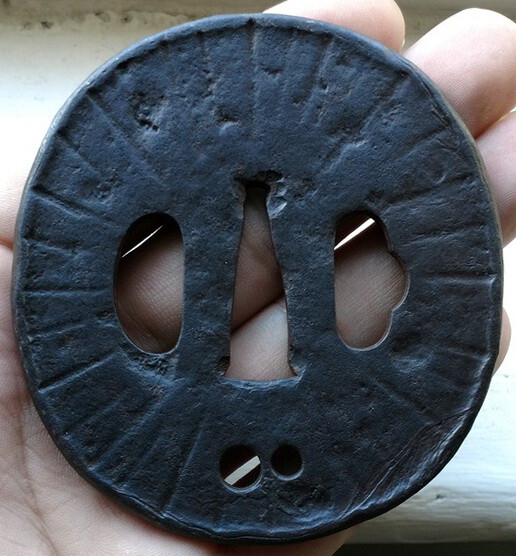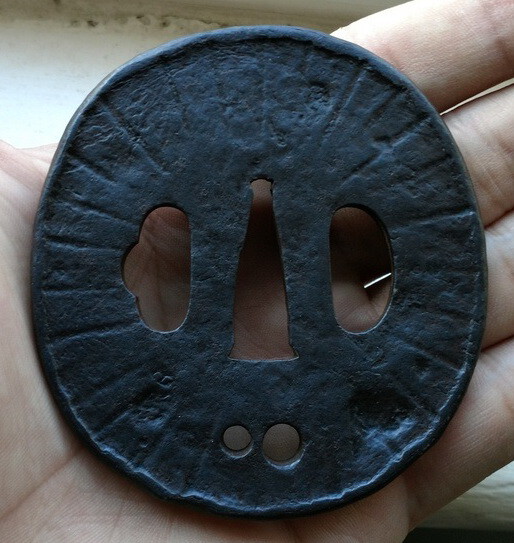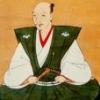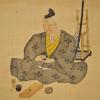Leaderboard
Popular Content
Showing content with the highest reputation on 03/03/2025 in all areas
-
Just saw this...sorry to Brian...I know how he feels. About filling the needs of NMB, I agree, the proposed moderators and the dividing up of the sections and tasks seems the best solution. I my case, thank you for the confidence shown to me . I am here to help contribute to gendaito/gunto matters if needed but must say that I am afraid I am about past my 'use-by' date as a moderator . I am definitely no longer on top of any technological needs for being useful on this board, I think I am really just here for giving advice and assisting as I always have as a contributing member. Thanks guys, but I can't moderate.......I'm sure you will fill the gaps as necessary as there is plenty of talent among you all.7 points
-
Greetings! I recently became the owner of this beautiful set. It's a pity that the photo, as usual, does not convey all the beauty. I would like to learn more information about this master and the school, as well as reveal the plot in more detail. Does anyone have any thoughts? The description of the lot from the Sothebis 2006 auction says: «Inlaid in iroe takazogan with New Year revellers on a shibuichi nanako ground, signed Kanryusai Yoshimori and kao» Here's what I could find about Yoshimori. Part of the signature matches in small details. https://www.tosogu.d...nno-yoshimori-kozuka Thank you all in advance!5 points
-
Bruce, thank you for mentioning me, and I also appreciate Sam's recognition. Unfortunately, I’m now busier than before and don’t have as much time to be on the forum as I used to. I’m afraid I won’t be able to take on the role of Moderator. However, I’m more than willing to assist as much as possible to help you and the other members.4 points
-
Cut the guy some slack. He says he’s new here. He’s open about it, he admits he didn’t know what he was doing, and he understands now what folks are telling him. He’s not the first, and he won’t be the last, and just I hope he can take the positive from our answers.3 points
-
Rob, It's going to be easy to take offense and think you are being treated unfairly. But if you've been here long enough, you'll see that we are fairly strict about restoration, don't allow amateur work at all, and are all of the opinion that we don't entirely own these items, just preserving them for future generations. That said, it is a wartime arsenal sword, so not as critical as antiques that we generally deal with, but hopefully you'll also understand that people are going to be harsh. Mainly to make sure that those amateurs reading who haven't yet taken their swords to a buff or sandpaper get the message, and maybe will reconsider. We are in the game of preserving and properly restoring. Sanding, buffing etc may make a sword look better to a knife collector, but to a Japanese sword collector it looks worse. Hides any hamon that was there, changes the edge geometry and generally takes it out of the league of collecting and into the hands of the general "sword swinger" Again, not trying to offend, just being blunt for the next guy who reads this before doing work himself. You have a genuine piece of WW2 history. What's done is done. It has an antique tsuba that may have been worth a few hundred. Resist the urge to do any more work, and it will still have some value for the future. Nakago patina is vital to the value of a Japanese sword. Cleaning it halves that value. Anyways, hope you got some decent info on the smith and what the sword is.3 points
-
All the work on the blade, fittings and tang are exactly the opposite of what should be done on a Japanese sword. Kinda hurts to read. Ruined a lot of the value it would have had. Too late now though. It's a wartime sword, and it does have a temper line. But with the work done to it, there is little chance it will be visible now, without very expensive professional restoration. These are also not sharpened like knives, you don't take a stone to the edge. Sharpening is accomplished through the blade polishing process which is quite complex and expensive. I suggest doing no more work on it, and just keeping it lightly oiled.3 points
-
3 points
-
2 points
-
I highlighted a section of your comment above and while that may be true in other fields, in Japanese swords the opposite is actually 100% true. A properly restored blade (done by a professional traditionally trained polisher) and the rusty, out of polish blade are both worth much more than the amateur restoration. There is no level of amateur restoration in Japanese swords that can add any value. Old blades are better off cleaned lightly with rubbing alcohol and covered with a thin layer of oil to prevent further corrosion until its time for a proper restoration. Any other attempts at restoration will only hurt the condition, collectability, and value of the sword no matter how careful the amateur is or how good their intentions are.2 points
-
Robert, looks to be made by “Kunimichi” (国道), real name Kobayashi Magoichi (小林孫市), of Seki, born March 14th 1901, and died September 4th 1969. He was a wartime smith but did produce some good work. He registered early on as a Seki swordsmith in Showa 14 (1939) October 26. This one has a stamp of Sho in sakura indicating early war and not traditionally made. In 1942 list of 400 smiths he was ranked as Ryōkō no Retsu (7/7) and in the 1941 exhibition was ranked as Fourth Seat. Yours is in wartime civilian mounts. Pic below from Slough book:2 points
-
2 points
-
@kanemotows6 Scott, the smith is Toki Sukenobu who produced good work. Examples and family history here:2 points
-
This is one element, but the tsuba is also used to protect against the opponent's blade, which is why it's made of soft metal so it doesn't break. In Katori Shinto ryu, there are several techniques using tsuba.2 points
-
2 points
-
These stories keep themselves alive and whoever read it somewhere continues spreading it. It is the same thing as in other fields, e.g. TEKKOTSU.2 points
-
Type (Tachi, Katana, Wakizashi, Tanto, Naginata, Other) : Katana Ubu, Suriage or O-Suriage : Ubu Mei : (Mumei, Signature) : Bizen (no) Kuni Junin Ichiryushi Nagamitsu Kore O Kinzo (備前国住人一龍子長光謹造之), Showa Mizunoto Hitsuji Sai Go Gatsu Hi(昭和癸未歳五月日) Papered or not and by whom? : not necessary Era/Age : Showa May 1943 Shirasaya, Koshirae or Bare Blade? : Koshirae Nagasa/Blade Length : 66,5 cm Sori : 12,5 mm Hamon Type : Choji-Midare mit Ashi in Nioi Deki Jihada : Itame Other Hataraki Visible : - Flaws : nothing Sword Location : Germany Will ship to : Europe and US Payment Methods Accepted : Paypal Price and Currency : 4500€ Other Info and Full Description : Hello Gendaito lovers, since a new door has been opened for me and I am taking the chance, I have to sell this rare Gendaito by Ichirhara Nagamitsu with date. I don't need to write much about the smith here. More infos here: https://japaneseswordindex.com/naga.htm This is a great blade and I hope someone takes the opportunity. The price is very fair. A Nagamitsu with BoHi, long Mei and date is hard to find.1 point
-
Difficult to tell exactly what has been done from these images or what the underlying work depicts but, iron fittings can be found lacquered for two fairly common reasons (and probably a few less common) 1. to prevent rusting or disguise rusting (many samurai were very impoverished) 2. to tone them down to a more shakudo type of finish perhaps to apparently match an odd shakudo fuchi. I have also seen hastily assembled “Satsuma Rebellion” swords with lacquered fittings including tsuba.1 point
-
Hi Robert, For clarification, blades with the Showa stamp, like yours, were not "arsenal blades." The stamp was an inspection stamp of the Seki Cutlery Manufacturers Association. The Association began inspecting blades made by the industry at the request of sword makers and sellers. The demand for Japanese blades exploded in the mid 1930s as Japan transitioned away from Western styled swords, back to Japanese, Samurai, styled swords. There were low-quality blades hitting the market and hurting the industry's reputation. So, they approached the Cutlery Association asking them to do Quality Control by inspecting all blades (more likely all non-traditionally made) made in the area. The stamp showed up in 1935, but most blades with the stamp were made in 1940-41. After logging yours into my files, it was surprising to see how many of them were in civilian fittings. I'll run a count to see the percentages, but it seems higher than blades with other stamps. My point being, that they were not "arsenal" blades. The majority were sold to the Army and fitted out that way, but many of these blades were being initially bought by civilians or civil shops, later donated to the war effort and refitted, sometimes with just a leather cover, like yours. On another note, I'm glad to hear you had success recovering the leather cover. I have read many time of guys trying to preserve their leather covers, but had never heard of such success as you've had. The blade does have a temper line, hamon in Japanese. It is the straight pattern called suguha. Here is a care guide: Japanese Sword Care Guide - Japaneseswordindex.com1 point
-
1 point
-
1 point
-
Hi there all, I’m looking for a Type 95 NCO Gunto in the 30 - 150K blade serial range, black iron Tsuba in the 3. - 4MM size range, copper back latch, and copper Fuchi with preferably matching serial of the scabbard and blade, but honestly, it doesn’t need to match. Other stamped variants in the above configuration / specifications I’d be happy to consider: Gifu, Koban, or Suya. Price point I’m looking at: $ 500 - $1500. Thank you all in advance for reading my post, and I look forward to seeing possibilities and making new acquaintances. The below attached pics are not mine; they are pulled from this forum and Google Images of an example of what I’m searching for. Thank you.1 point
-
Yes, they did unblock the book for me after I contacted them. They were quite fast about it (less than 24h). Good to know that approach generally works. Best, Alexi1 point
-
Destructive testing. Probably the only serious way to go, but then ofcourse there is nothing to destroy between the end of Kofun and late Heian, so one should rely on Asian data instead. Availability of items for destructive testing is what limiting them - couple of Muromachi pieces, one or two before but plenty of Edo items. I liked Kimura's data but that's pretty much how many pieces he worked with. Kamakura there will be very few opportunities also, probably ko Naminohira is the only thing that can be haid that is not unreasonable pricewise... Maybe some late Kamakura pieces.1 point
-
The tang is signed Seki ju Kunimichi saku "Made by Kunimichi of Seki province" As you stated, removing the rust from the tang was an unfortunate mistake as it is a very important part of the history and also value of the sword. But it is a WW2 era sword and from what I've read here, having the leather saya cover is an added bonus (some of the military guys can chime in there).1 point
-
Robert: I'm not one of the translators so I cannot read the smith, however the showa stamp above the signature indicates this is a ww2 made arsenal blade. The fittings are not army issue but could be gunzoku, civilians that worked with the military and were allowed to carry swords. The blade would be made using part machine and part forged and would have been oil quenched. Overall, a nice piece of genuine military history. John C.1 point
-
Thank you for the reminder, HB. Could you please help me understand something in case you have more information. Who is leading the shinsa, what format is it going to have and what will the outcome be? In other words, is it an informal friendly evaluation or a formal exercise with some certificate issued thereafter? Thanks.1 point
-
Great work! There are two famous artists named 美盛,repectively 海野美盛 (初代 first generation master, also called 海野太三郎) and 海野美盛二代(second master) This is most likely from the former because he lived in late edo period whereas the second master lived in Meiji period. The first master is the uncle of the great 海野勝珉 or Unno Shomin, who is regarded as one of the best metal artists in Meiji period. I can not be certain but I can not find any other who is named 美盛 . I just realized you already know the maker, above is what I wrote before reading the link you provided1 point
-
Matt, In spite of the condition of the fittings, you've likely got a really nice blade there. Sukenobu, from Noshu (Modern day Gifu, If I have that right) and was an RJT rated smith that made blades traditionally. I don't know when he got RJT qualified, maybe @mecox or @vajo might know. Check a litter higher above the smith name to see if there was a star stamped up there. The earliest I have on file from him is Oct '42, so far, with a star.1 point
-
1 point
-
Just to add, even if it were amber, it is probably "new" amber that is melted down and poured into a mold to make the figure. This is a common technique used with amber jewelry. John C.1 point
-
Dan: Remember too, that condition matters when referencing price. That blade and scabbard has a lot of rust on it. That should factor into your decision. You could get lucky and get a well known maker, however it would still need a lot of reconditioning. Personally, I would not go above 400 dollars (385 euros) for one in that condition with unknown smith. John C.1 point
-
I think all of Bruce's suggestions are great ones. My biggest reservation is my relative experience and knowledge compared to those on that list! @nulldevice has learned a lot really fast, and is savvy. @Jussi Ekholm has collected invaluable data for us, and is clearly working altruistically for the betterment of the hobby. Both seem very level headed, with good eyes and intentions. I'd add them for consideration. I have no idea if either would be willing or interested. Colin would have been my #1 choice! But I totally understand his reasons. I would be open to helping cover any section assigned, or even generally all sections if asked. I spend a lot of time on the forum and could expand the topics I look into. I agree wholeheartedly with @Stephen, that a group effort in reporting suspicious activity will benefit both Brian, mods and everyone. And always, when in doubt I'd defer to Brian. Cheers, -Sam1 point
-
Thank you Jake and Soshin for your comments and opinions. What I really like about it is the mountain and lake scene it depicts. It is a well known pattern in Chinese porcelain and scholar paintings and we can see the influence of culture here. But this pattern is very rarely used in swords fittings primarily due to the space limitations I suspect. Later in the Meiji period, it becomes very popular again on export mixed metal display objects, which are larger in size. The size is only the same as a US nickel coin and the amount of details shown is pretty amazing. The pictures do not do justice and the pair shows much better in hand. So far I found a couple examples from the same name but they are kozuka and Fuchi, links are shown bellow. I will continue to look for the answer and that is what makes collecting fun. https://www.winners-...productDetail/15888/ https://art.thewalters.org/object/51.1086/1 point
-
Imo…..Most likely an Ox given that they are a zodiac animal and often encountered in many Japanese art genres including sword fittings. Looks like it might have been given a “paint/lacquer coat” to imitate Shakudo and gold. Bit carelessly done when you look around the edges.1 point
-
Enhancing the “trims” on my Haidate as the printed pattern is quite faded. See photos. Any thoughts? Question. Part names of Haidate. The leather reinforcement strips I think are called chikara gawa. But are the additional edge trims (as added on some examples) called Kawa Fukurin? Also, is there a name for the “cross and grass” motif? And what’s the origin of this pattern? Thanks 😁👍🏼 Chris1 point
-
1 point
-
I’m flattered to be considered. I have always respected the way Brian runs things here, and if chosen I would do my best to moderate the way he does. I am sorry to hear about your health Brian, and I’ve always been impressed that you’ve been doing much of the moderating on your own for so long. Whoever you choose to help out, I trust in your judgement. -Sam1 point
-
1 point
-
Google, Yauskuni shrine swords, it's really not that hard.1 point
-
"YASUNORI (靖徳), Shōwa (昭和, 1926-1989), Tōkyō – “Kajiyama Yasunori kinsaku” (梶山靖徳謹作), “Yasunori” (靖徳), “Yasunori kinsaku” (靖徳謹作), “Takenori” (武徳), “Daitō ́a-mamori Masamune” (大東亜守正宗, “Masa-mune, for the protection of Greater East Asia”), real name Kajiyama Tokutarō (梶山徳太郎), born February 16th 1881 in Nigata (仁方) in Hiroshima Prefecture, other sources say he was born on April 2nd 1907 but this is disproved by an extant blade dated 1938 and signed with “made at the age of 58,” he was the son of Kajiyama Tomohira (梶山友平) and signed in early years like his father with the name Ujimasa (氏正), he also studied under the Osafune smith Yokoyama Sukeyoshi (横山祐義), on July 8th 1933 he entered the Yasukuni forge and became the smith name Yasunori from the minister of war Araki Sadao (荒木貞夫, 1877-1966), later he became the managing director of the forge, in 1934 he had the honour to for a guntō for the emperor, on September 13th 1934 he received the smith name Takenori (武徳) from general Nara Takeji (奈良武次, 1868-1962), from that time onwards he signed all blades made for the Yasukuni forge with Yasunori and all other privately made blades with Takenori, he retired in June 1940 and returned to Hiroshima, from November 20th 1943 onwards he signed his blades with “Daitō ́a-mamori Masamune” (大東亜守正宗) or just with “Masamune” (正宗), records show us that he made about 1,250 blades for the Yasukuni forge, his speciality was an excellently hardened suguha, he died on January 8th 1954, other sources say it was 1967, kihin-jōi (Akihide), Special Honor Seat at the 6th Shinsaku Nihontō Denrankai (新作日本刀展覧会, 1941)."1 point
-
Talk about a flash deal! Congratulations Matthew1 point
-
Glad to see you're still enjoying it Barry! Quite an enigma that piece...of course very much in the Yamakichibei style and it has several traits of the Nidai in particular. The thick yasuri, rim, style and placement of the udenuki ana and tsuchime are all eerily similar. The iron is very Yamakichibei-like as well, although finished much differently than my no-doubter Nidai, the color and patina is very close. The tekkotsu is also small in diameter but very high relief as we see in a lot of Yamakichibei tsuba. Where it gets fuzzy is the extensive folding, heavy yakite and lack of a signature. My signed Nidai does show several clear fold lines on the rim and wasn't eroded via likely kusurashi treatment as this one was. Perhaps mine might show similar activity if it were?? Sadly, you'll never know who made it. Could be a known YKB tsubako, could be a workshop guy and I think something along the lines of Hoan or even early Myochin could be a possibility. What I do know is that it's a fantastic piece of iron made by a very talented artist. It radiates power and character and has an immense presence in hand. You won't find many tsuba that so closely emulate the process driven, organic beauty of buke tea aesthetics.1 point
-
Sergei, My goodness, what a wonderful study. I have one more to add that I bought from Evan Worley nearly a year ago. The thread is http://www.militaria.co.za/nmb/topic/22905-wonderful-early-iron-tsuba. For the sake of the thread I'll put here just two pictures from Evan's sale notice - I haven't taken any of my own photos yet. This tsuba is similar to Fig. 3 and Fig. 15 in Sergei's study. Best regards, Barry Thomas aka BaZZa.1 point
-
Yes, there are four Yamasaka Kichibei pieces, and twelve "Meijin Shodai" examples, plus a reproduction of an oshigata which may depict a Yamasaka or a Meijin Shodai" tsuba; it's too difficult to tell from the image whose work it is, though it looks to me more like Yamasaka's than Meijin Shodai's. *Note: of these twelve "Meijin Shodai" examples, at least three, and possibly a fourth, are erroneously attributed to him. So only eight or nine of these are actually his work. There are also several Sakura Yamakichibei sword guards, but I do not consider him part of the actual Yamakichibei atelier, since he worked at least 30-40 years (perhaps more) after Nidai Yamakichibei was active.1 point
-
Hi Steve, You had mentioned above learning about Momoyama and Early Edo Buke culture and specifically their practice of Cha-no-Yu, so I thought I would offer up a bit of a book list. Rediscovering Rikyu: https://books.google.com/books/about/Rediscovering_Rikyu_and_the_Beginnings_o.html?id=vkqBAAAAMAAJ Japanese Tea Culture: https://books.google.com/books/about/Japanese_Tea_Culture.html?id=VmTqCB9TBXYC Turning Point: Oribe and the Arts of Sixteenth-century Japan: https://books.google.com/books/about/Turning_Point.html?id=q50bU2oPj98C Tea in Japan: https://books.google.com/books/about/Tea_in_Japan.html?id=O8MjO6U62xgC Japanese Tea Ceremony: https://books.google.com/books/about/Japanese_Tea_Ceremony.html?id=pS_RAgAAQBAJ These last two are probably the best overview titles. Some of these are out of print, so your local library might be able to find a copy. >My belief is that one cannot properly appreciate or understand Yamakichibei guards unless one also studies the culture of Tea in the late-16th and early-17th centuries.<1 point
This leaderboard is set to Johannesburg/GMT+02:00

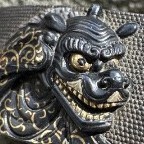

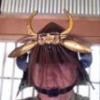

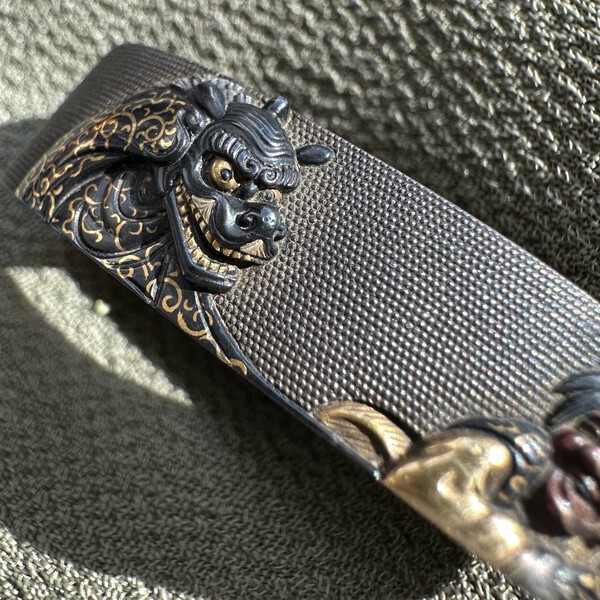



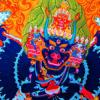
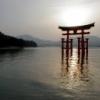





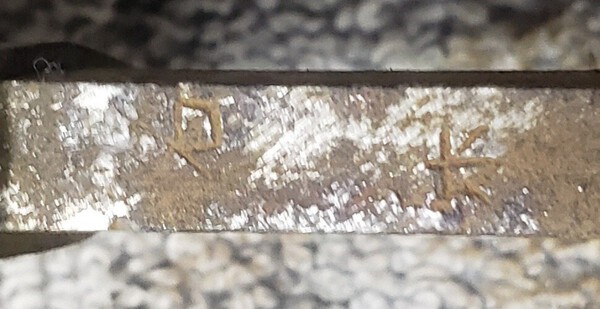










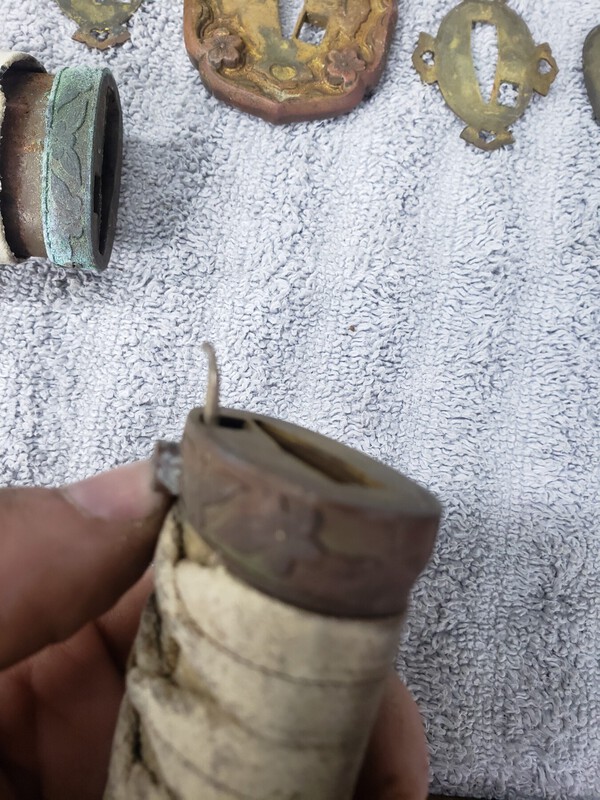
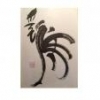
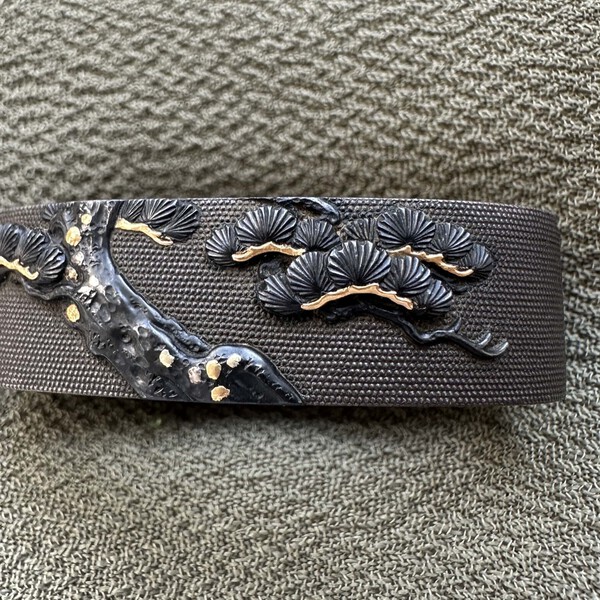




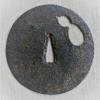






















.thumb.png.85f3fd036d09507865860724219753c4.png)

